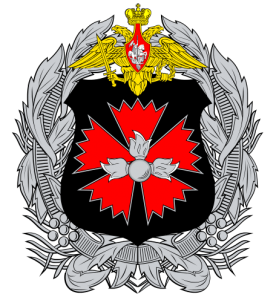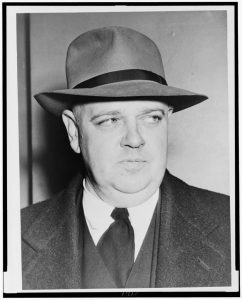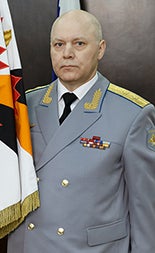
Update (7-17-18): On July 13, 2018, the Department of Justice announced indictments against 12 GRU officers ” for committing federal crimes that were intended to interfere with the 2016 U.S. presidential election.” Here are links to the indictments and press release:
When most Americans think of Soviet/Russian intelligence activity in our country, they primarily think of the state security services, the KGB (Committee for State Security) and its main post-Soviet successor, the FSB (Federal Security Service). Some of the most famous and effective Soviet/Russian intelligence operations in the United States, however, have involved an organization few Americans have heard of, one dubbed “the neighbors” by their KGB/FSB rivals: the Glavnoye Razvedyvatel’noye Upravlenie (GRU), the Main Intelligence Directorate of the Armed Forces General Staff: Soviet/Russian military intelligence. From the recruitment of State Department official Alger Hiss in the 1930s, to the Cuban Missile Crisis, to last year’s election-related hacking of the Democratic National Committee (DNC), the GRU has played an important yet overlooked role in many of Moscow’s most influential intelligence activities in this country.
The GRU: Introduction and Overview

The first iteration of Soviet military intelligence was founded in November 1918, but it was not until April 1921 that the body which would become the GRU was formed. Known as the Razvedupr, short for intelligence directorate, or the Fourth Directorate, it was not officially called the GRU until February 16, 1942, a name it carries till this day. Tasked with primarily gathering military-related intelligence, the GRU has often defined this in the broadest sense, gathering political, strategic, economic, and technological information. In addition to running networks of agents, GRU also controls military and naval attaches at Russian embassies, and has extensive paramilitary capabilities.
Throughout its history, the GRU has had a complicated relationship with the political security services, the KGB and its post-Soviet successors, the FSB and the SVR (Foreign Intelligence Service.) On the one hand, as a part of the military, it has no direct organizational ties to the other security services. In fact, there has often been a highly intense, competitive, rivalry between the GRU and the KGB/FSB/SVR. On the other hand, the KGB usually held pride of place in the Soviet intelligence hierarchy, and the GRU was often placed in a state of de facto subordination to the former. A number of GRU leaders, in fact, came from the KGB and its predecessors. For example, Ivan Serov, KGB chairman from 1954-1958, was demoted and sent to head the GRU from 1958-1963. In the more fractured post-Soviet environment, the GRU is now fully independent of the political security services.
The GRU in America: The Soviet Period

In the early years of the Soviet regime, according to historian Jonathan Haslam, “military intelligence seemed more promising than its civilian counterpart, both larger and more substantial.” (Haslam, Near and Distant Neighbors, 23) Fueled by a culture of risk-taking inculcated by its most influential early leader, Yan Berzin, and heavily relying on recruitment of foreign communists, the GRU built overseas agent networks that equaled or surpassed those belonging to the KGB’s predecessors, known by the mid-1930s as the NKVD. However, the GRU’s risk-taking soon caught up to it, resulting in the exposure of several of its overseas networks. As a result, GRU was subordinated to the foreign intelligence branch of the NKVD, and many of its surviving networks were transferred to the latter.
Nonetheless, many of the GRU’s earlier efforts continued to bear fruit in the mid-to-late 1930s. This was especially true in America, where the GRU succeeded in establishing a network of communist and pro-communist agents within the Roosevelt Administration from 1935-1938. Arguably the most important of these agents was Alger Hiss, a well-connected, up and coming, Harvard law graduate, who in September 1936 began working at the State Department. Hiss’ GRU controller was an American, a communist party (CPUSA) member, a writer and editor reassigned to underground work in 1932: Whittaker Chambers. Chambers in turn reported to the head of GRU operations in America, Col. Boris Bykov.
In April 1938, disillusioned by Stalin’s Great Terror, then at its height, Chambers defected from the GRU and CPUSA. After more than a year spent hiding from Soviet intelligence, Chambers would take a job at Time Magazine, eventually becoming a senior editor.
By 1945, Hiss had become a senior State Department official, accompanying President Roosevelt to the Yalta conference in February, and organizing the opening conference of the United Nations in San Francisco. He was also still working for the GRU, under the code name “ALES.”. A March 30, 1945 report from the NKVD station chief in Washington to Moscow noted that: “Ales has been continuously working with the neighbors (i.e. the GRU) since 1935.” (Quoted in Haynes, Klehr, and Vassiliev, Spies, 20-21)
In August 1948, the House Un-American Activities Committee (HUAC) held hearings on communist espionage in the US Government. Somewhat reluctantly, Whittaker Chambers came forward to testify about his activities as a GRU agent in the 1930s. He named numerous individuals who had been part of his network, including Hiss. By now, Hiss had left the State Department to become president of the Carnegie Endowment and was a pillar of the New Deal establishment. He vehemently denied Chambers’s accusations, and the confrontation between the two men became the focus of the HUAC investigation, spawning a bitter partisan controversy that dominated the headlines and would linger for decades. Eventually, Chambers produced copies of microfilmed documents that Hiss had given him. In 1950, Hiss was convicted of perjury for denying under oath his involvement with the GRU, and was sentenced to four years in prison. For five decades, Hiss was considered by many to be the victim of red-baiting hysteria, but post-Cold War archival revelations have largely validated Chambers’s claims.
After World War II, the GRU largely played second fiddle to the NKVD/KGB in terms of Soviet intelligence activity in America. The main exception was during the John F. Kennedy Administration (1961-1963). This was especially true during the Cuban Missile Crisis of October 1962. A GRU Colonel named Georgi Bolshakov, working undercover as a news correspondent, maintained a backdoor channel of communication with Attorney General Robert Kennedy that proved important in helping resolve the confrontation. Less happily for the Soviets, another GRU Colonel, Oleg Penkovsky played an equally crucial role. Arrested in Moscow in September 1962 as a spy, the information Penkovsky previously provided to the CIA helped reveal that the Soviets were installing ballistic missiles in Cuba, thus leading to the US blockade of the island.
The GRU in Post-Soviet Times: “Little Green Men” and “Fancy Bear”

Unlike the KGB, which was broken up into a number of separate organizations, the GRU survived the fall of Soviet communism intact. Its fortunes have waxed and waned in the quarter-century since the end of the USSR. After facing a potentially serious loss of prestige and status following its failures in Russia’s 2008 war with Georgia, the GRU has come back with a vengeance this decade. It has reverted to the ambitious, risk-taking mentality of its early years that, in researcher Mark Galeotti’s view, “reflects a wartime mindset.” It has exploited its unique paramilitary capabilities, especially in Ukraine, where GRU was the main driving force behind the “little green men” who invaded Crimea and regions of eastern Ukraine in 2014. The GRU has also shown a growing willingness to engage in paramilitary subversion beyond the former Soviet Union. It has been implicated in a planned October 2016 coup against the pro-NATO government of Montenegro. GRU agents have also been linked to a violent, radical right group in Hungary, allegedly supplying them with both weapons and training.
The GRU’s risk-taking, aggressive, war mentality transcends kinetic action. It has also been applied in cyberspace, employing the tools of the digital age to pursue espionage and influence operations. One of the world’s most ambitious and highly effective hacking organizations, dubbed APT-28, or “Fancy Bear”, is believed to be run by the GRU. It is through such cyber operations that the GRU has once again dramatically influenced events in the United States. According to US government and private analysts, it was Fancy Bear that conducted the most egregious of the 2016 election-related hacks here in the US, directed at the Democratic National Committee and other political targets.
The official unclassified US intelligence community report on the hacking, released in January, strongly emphasized the primary role of the GRU in carrying them out:
The General Staff Main Intelligence Directorate (GRU) probably began cyber operations aimed at the US election by March 2016. We assess that the GRU operations resulted in the compromise of the personal e-mail accounts of Democratic Party officials and political figures. By May, the GRU had exfiltrated large volumes of data from the DNC.
We assess with high confidence that the GRU relayed material it acquired from the DNC and senior Democratic officials to WikiLeaks. (Assessing Russian Activities, 2-3)
In response to the hacks of the DNC and other American political organizations, on December 29, 2016, the Obama Administration sanctioned the GRU “for tampering, altering, or causing a misappropriation of information with the purpose or effect of interfering with the 2016 U.S. election processes.” (Fact Sheet) In addition, sanctions were imposed on GRU head Lt. General Igor Korobov and three of his deputies. The release announcing these sanctions likewise emphasized the leading role of the GRU in conducting the hacking.
Nearly three decades after the end of the Cold War, not only does the GRU continue to operate in America, the impact of those operations is arguably greater than ever before.
Select CWIS Sources Concerning the GRU:
Conduct of Espionage Within the United States by Agents of Foreign Communist Governments: Hearings Before the Committee on Un-American Activities, House of Representatives, 90th Congress, First Session. 1967. (Joyner Docs CWIS: Y 4.UN 1/2:ES 6)
Hearings Regarding Communist Espionage in United States Government, Part 1: Hearings Before the Committee on Un-American Activities, House of Representatives, 80th Congress, Second Session. 1948. (Joyner Docs CWIS: Y 4.Un 1/2:C 73/6)
Interim Report on Hearings Regarding Communist Espionage in United States Government: Investigation of Un-American Activities in the United States. Committee on Un-American Activities, House of Representatives, 80th Congress, Second Session. 1948. (Joyner Docs CWIS: Y 4.Un 1/2:C 73/8)
Investigation of Un-American Propaganda Activities in the United States, Volume 9, Hearings before a Special Committee on Un-American Activities, House of Representatives, 76th Congress, First Session. 1939. (Joyner Docs CWIS: Y 4: Un 1/2: Un 1/v. 9) (Features testimony from GRU defector Walter Krivitsky, from pages 5719-5742.)
The Kremlin’s Espionage and Terror Organizations: Testimony of Petr S. Deriabin, Former Officer of the USSR’s Committee of State Security (KGB): Hearing before the Committee on Un-American Activities, House of Representatives, 86th Congress, First Session. 1959. (Joyner Docs CWIS: Y 4.UN 1/2:K 88)
Patterns of Communist Espionage: Report by the Committee on Un-American Activities, 80th Congress, Second Session. 1958. (Joyner Docs CWIS: Y 4.UN 1/2:C 73/101)
Scope of Soviet Activity in the United States, Part 1: Hearing Before the Subcommittee to Investigate the Administration of the Internal Security Act and Other Internal Security Laws of the Committee on the Judiciary, United States Senate, 84th Congress, Second Session. 1956. (Joyner Docs CWIS: Y 4.J 89/2:SO 8/4/ PT. 1)
The Shameful Years: Thirty Years of Soviet Espionage in the United States. Committee on Un-American Activities, House of Representatives. 1951. (Joyner Docs CWIS: Y 4.UN 1/2:SO 8)
Soviet Espionage within United States Government: Second Report. Committee on Un-American Activities, 80th Congress, Second Session. 1948. (Joyner Docs CWIS: Y 4.Un 1/2:C 73/8/2d rp.)
Additional Federal Government and Other Primary Sources:
Assessing Russian Activities and Intentions in Recent US Elections. Office of the Director of National intelligence, January 6, 2017.
Central Intelligence Agency: Freedom of Information Act Electronic Reading Room
Cold War International History Project: Venona Project and Vassiliev Notebooks Index and Concordance
FACT SHEET: Actions in Response to Russian Malicious Cyber Activity and Harassment, White House Office of the Press Secretary, December 29, 2016
FBI FOIA Vault: Alger Hiss’ FBI File.
Wilson Center Digital Archive: Vassiliev Notebooks
Other Sources:
Andrew, Christopher and Vasili Mitrokhin. The Sword and the Shield: The Mitrokhin Archive and the Secret History of the KGB. New York: Basic Books, 1999. (Joyner Stacks UB251.S65 A63 1999)
Frenkel, Sheera. “Meet Fancy Bear.” Buzzfeed News, October 15, 2016.
Galeotti, Mark. Putin’s Hydra: Inside Russia’s Intelligence Services. European Council on Foreign Relations, May 11, 2016.
Haslam, Jonathan. Near and Distant Neighbors: A New History of Soviet Intelligence. New York: Farrar, Straus and Giroux, 2015. (Not yet owned by Joyner Library)
Haynes, John Earl, Harvey Klehr and Alexander Vassiliev. Spies: The Rise and Fall of the KGB in America. New Haven: Yale University Press, 2009. (Joyner Stacks: UB271.R9 H389 2009)
Leonard, Raymond W. Secret Soldiers of the Revolution: Soviet Military Intelligence, 1918-1933. Westport Conn.: Greenwood Press, 1999. (Joyner Stacks: UB251.R8 L46 1999)
Suvorov, Victor. Inside Soviet Military Intelligence. New York: Macmillan, 1984. (Joyner Stacks: UB251.S65 S88 1984)
Suvorov, Victor. Inside the Aquarium: The Making of a Top Soviet Spy. New York: Macmillan, 1986. (Joyner Stacks: UB271.R92 S885 1986)
Walker, Shaun. “US expulsions put spotlight on Russia’s GRU intelligence agency.” The Guardian, December 30, 2016.
Weiss, Michael. “The GRU: Putin’s No-Longer-So-Secret Weapon.” The Daily Beast, December 31, 2016.